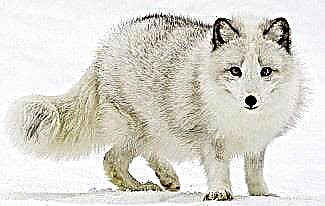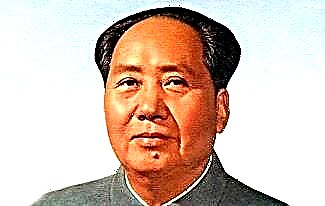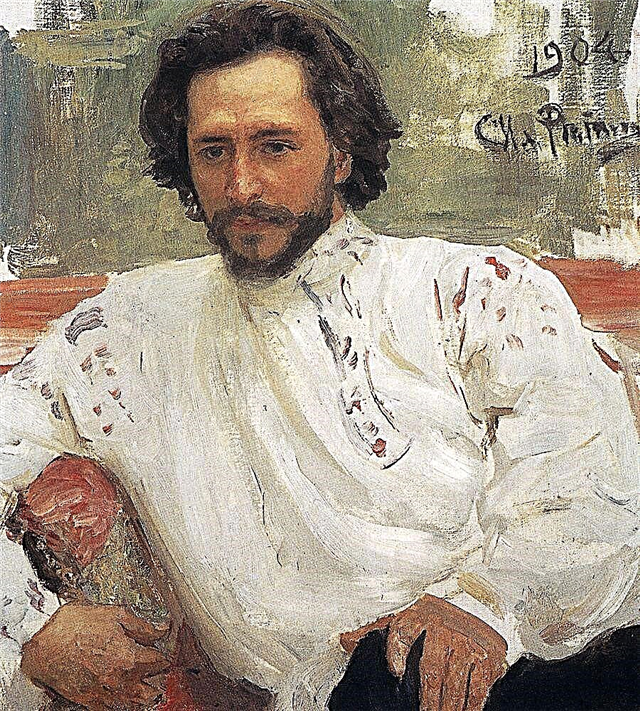Andrey Nikolaevich Kolmogorov (nee Kataev) (1903-1987) - Russian and Soviet mathematician, one of the greatest mathematicians of the 20th century. One of the founders of modern probability theory.
Kolmogorov managed to achieve fantastic results in geometry, topology, mechanics and in a number of areas of mathematics. In addition, he is the author of groundbreaking works on history, philosophy, methodology and statistical physics.

In the biography of Andrei Kolmogorov, there are many interesting facts, which we will tell about in this article.
So, before you is a short biography of Andrei Kolmogorov.
Biography of Andrey Kolmogorov
Andrey Kolmogorov was born on April 12 (25), 1903 in Tambov. His mother, Maria Kolmogorova, died in childbirth.
The father of the future mathematician, Nikolai Kataev, was an agronomist. He was among the Right Social Revolutionaries, as a result of which he was later exiled to the Yaroslavl province, where he met his future wife.
Childhood and youth
After the death of his mother, Andrei was brought up by her sisters. When the boy was barely 7 years old, he was adopted by Vera Kolmogorova, one of his maternal aunts.
Andrei's father was killed in 1919 during the Denikin offensive. An interesting fact is that his father's brother, Ivan Kataev, was a famous historian who published a textbook on Russian history. The schoolchildren studied history using this book for a long time.
In 1910, 7-year-old Andrey became a student of a private Moscow gymnasium. During that period of his biography, he began to show mathematical abilities.
Kolmogorov invented various arithmetic problems, and also showed interest in sociology and history.
When Andrey was 17 years old, he entered the Mathematics Department of Moscow University. It is curious that within a few weeks after entering the university, he managed to successfully pass the exams for the entire course.
In the second year of study, Kolmogorov received the right to receive 16 kg of bread and 1 kg of butter monthly. At that time, this was an unprecedented luxury.
Thanks to such an abundance of food, Andrey had more time to study.
Scientific activity
In 1921, a significant event happened in the biography of Andrei Kolmogorov. He managed to refute one of the statements of the Soviet mathematician Nikolai Luzin, which he used to prove Cauchy's theorem.
After that, Andrei made a discovery in the field of trigonometric series and in descriptive set theory. As a result, Luzin invited the student to Lusitania, a mathematical school founded by Luzin himself.

The following year, Kolmogorov constructed an example of a Fourier series that diverges almost everywhere. This work became a real sensation for the entire scientific world. As a result, the name of the 19-year-old mathematician gained worldwide fame.
Soon, Andrei Kolmogorov became seriously interested in mathematical logic. He was able to prove that all known sentences of formal logic, with a certain interpretation, turn into sentences of intuitionistic logic.
Then Kolmogorov became interested in the theory of probability, and as a consequence, the law of large numbers. For decades, the questions of substantiation of the law have worried the minds of the greatest mathematicians of that time.
In 1928 Andrey succeeded in defining and proving the conditions of the law of large numbers.
After 2 years, the young scientist was sent to France and Germany, where he had a chance to meet leading mathematicians.
Returning to his homeland, Kolmogorov began to deeply study topology. Nevertheless, until the end of his days, he had the greatest interest in the theory of probability.
In 1931, Andrei Nikolaevich was appointed professor at Moscow State University, and four years later he became a doctor of physical and mathematical sciences.
In subsequent years, Kolmogorov actively worked on the creation of the Big and Small Soviet Encyclopedias. During this period of his biography, he wrote many articles on mathematics, and also edited articles of other authors.
On the eve of the Great Patriotic War (1941-1945) Andrei Kolmogorov was awarded the Stalin Prize for his works on the theory of random numbers.

After the war, the scientist became interested in the problems of turbulence. Soon, under his leadership, a special laboratory of atmospheric turbulence was created at the Geophysical Institute.
Later Kolmogorov, together with Sergei Fomin, published the textbook Elements of the Theory of Functions and Functional Analysis. The book became so popular that it was translated into many languages.
Then Andrei Nikolayevich made an enormous contribution to the development of celestial mechanics, dynamical systems, the theory of probabilities of structural objects and the theory of algorithms.
In 1954 Kolmogorov made a presentation in the Netherlands on the topic "General theory of dynamical systems and classical mechanics". His performance was recognized as a global event.
In the theory of dynamical systems, a mathematician developed a theorem on invariant tori, which was later generalized by Arnold and Moser. Thus, the Kolmogorov-Arnold-Moser theory appeared.
Personal life
In 1942, Kolmogorov married his classmate Anna Egorova. The couple lived together for 45 long years.
Andrei Nikolaevich did not have his own children. The Kolmogorov family brought up Egorova's son, Oleg Ivashev-Musatov. In the future, the boy will follow in the footsteps of his stepfather and become a famous mathematician.
Some biographers of Kolmogorov believe that he had an unconventional orientation. It is reported that he allegedly had a sexual relationship with Moscow State University professor Pavel Alexandrov.
Death
Until the end of his days, Kolmogorov worked at the university. In the last years of his life, he suffered from Parkinson's disease, which progressed more and more every year.
Andrei Nikolaevich Kolmogorov died on October 20, 1987 in Moscow, at the age of 84.
Photo by Andrey Kolmogorov














